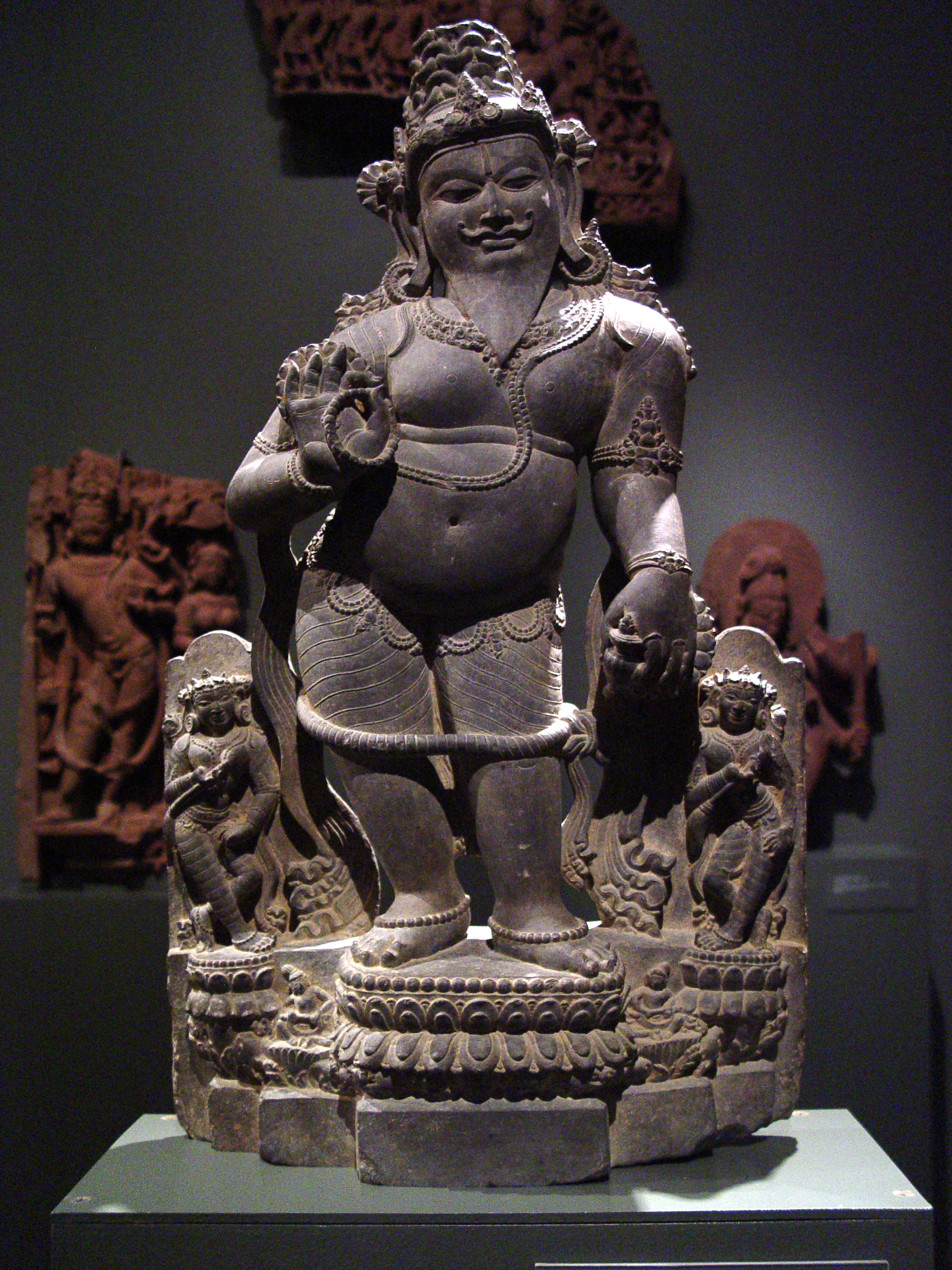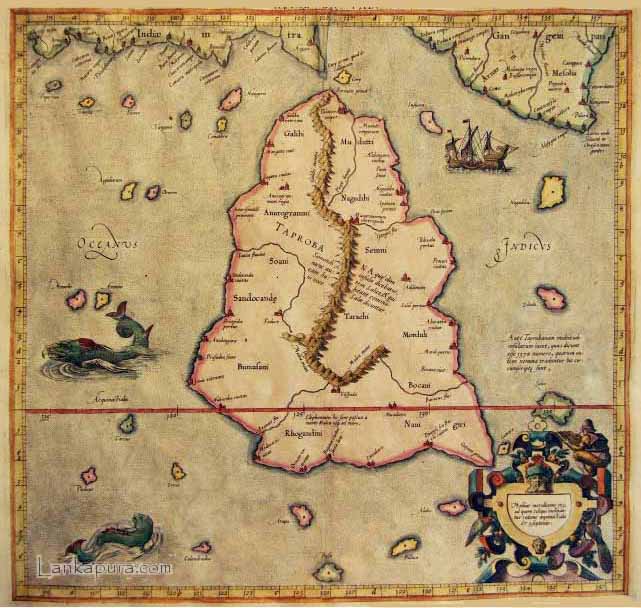|
Nainatheevu
Nainativu ( ta, நயினாதீவு ''Nainatheevu'', si, නාගදීපය ''Nagadeepa''), is a small but notable island off the coast of Jaffna Peninsula in the Northern Province, Sri Lanka. The name of the island alludes to the folklore inhabitants, the Naga people. It is home to the Hindu shrine of Nagapooshani Amman Temple; one of the prominent 64 Shakti Peethas, and the Buddhist shrine Nagadeepa Purana Viharaya. Historians note the island is mentioned in the ancient Tamil Sangam literature of nearby Tamil Nadu such as ''Manimekalai'' where it was mentioned as ''Manipallavam'' ( ta, மணிபல்லவம்), and ancient Buddhist legends of Sri Lanka such as '' Mahavamsa''. Ptolemy, a Greek cartographer, describes the islands around the Jaffna peninsula as ''Nagadiba'' ( el, Ναγάδιβα) in the first century CE. History Nāka Tivu / Nāka Nadu was the name of the whole Jaffna peninsula in some historical documents. There are number of Buddhist myth ... [...More Info...] [...Related Items...] OR: [Wikipedia] [Google] [Baidu] |
Island
An island (or isle) is an isolated piece of habitat that is surrounded by a dramatically different habitat, such as water. Very small islands such as emergent land features on atolls can be called islets, skerries, cays or keys. An island in a river or a lake island may be called an eyot or ait, and a small island off the coast may be called a holm. Sedimentary islands in the Ganges delta are called chars. A grouping of geographically or geologically related islands, such as the Philippines, is referred to as an archipelago. There are two main types of islands in the sea: continental and oceanic. There are also artificial islands, which are man-made. Etymology The word ''island'' derives from Middle English ''iland'', from Old English ''igland'' (from ''ig'' or ''ieg'', similarly meaning 'island' when used independently, and -land carrying its contemporary meaning; cf. Dutch ''eiland'' ("island"), German ''Eiland'' ("small island")). However, the spelling of the word ... [...More Info...] [...Related Items...] OR: [Wikipedia] [Google] [Baidu] |
Sangam Literature
The Sangam literature (Tamil: சங்க இலக்கியம், ''caṅka ilakkiyam'';) historically known as 'the poetry of the noble ones' (Tamil: சான்றோர் செய்யுள், ''Cāṉṟōr ceyyuḷ'') connotes the ancient Tamil literature and is the earliest known literature of South India. The Tamil tradition and legends link it to three literary gatherings around Madurai and Kapāṭapuram ( Pandyan capitals): the first over 4,440 years, the second over 3,700 years, and the third over 1,850 years before the start of the common era. Scholars consider this Tamil tradition-based chronology as ahistorical and mythical. Most scholars suggest the historical Sangam literature era spanned from c. 300 BCE to 300 CE, while others variously place this early classical Tamil literature period a bit later and more narrowly but all before 300 CE. According to Kamil Zvelebil – a Tamil literature and history scholar, the most acceptable range for the Sangam l ... [...More Info...] [...Related Items...] OR: [Wikipedia] [Google] [Baidu] |
Parâkramabâhu I
Parākramabāhu I ( Sinhala: මහා පරාක්රමබාහු, 1123–1186), or Parakramabahu the Great, was the king of Polonnaruwa from 1153 to 1186. He oversaw the expansion and beautification of his capital, constructed extensive irrigation systems, reorganised the country's army, reformed Buddhist practices, encouraged the arts and undertook military campaigns in South India and Burma. The adage "Not even a little water that comes from the rain must not flow into the ocean without being made useful to man" is one of his most famous utterances. In 1140, Parakramabahu following the death of his uncle, Kitti Sri Megha, Prince of Dakkinadesa, ascended the throne of Dakkhinadesa. Over the next decade, improved both Dakkhinadesi infrastructure and military. Following a protracted civil war, he secured power over the entire island around 1153 and remained in this position until his death in 1186. During Parākramabāhu's reign, he launched a punitive campaign against ... [...More Info...] [...Related Items...] OR: [Wikipedia] [Google] [Baidu] |
Tamil Language
Tamil (; ' , ) is a Dravidian language natively spoken by the Tamil people of South Asia. Tamil is an official language of the Indian state of Tamil Nadu, the sovereign nations of Sri Lanka and Singapore, and the Indian territory of Puducherry. Tamil is also spoken by significant minorities in the four other South Indian states of Kerala, Karnataka, Andhra Pradesh and Telangana, and the Union Territory of the Andaman and Nicobar Islands. It is also spoken by the Tamil diaspora found in many countries, including Malaysia, Myanmar, South Africa, United Kingdom, United States, Canada, Australia and Mauritius. Tamil is also natively spoken by Sri Lankan Moors. One of 22 scheduled languages in the Constitution of India, Tamil was the first to be classified as a classical language of India. Tamil is one of the longest-surviving classical languages of India.. "Tamil is one of the two longest-surviving classical languages in India" (p. 7). A. K. Ramanujan described it as "the on ... [...More Info...] [...Related Items...] OR: [Wikipedia] [Google] [Baidu] |
Sīthalai Sāttanār
Satthanar or Chithalai Satthanar ( ta, சாத்தனார் or சீத்தலைச் சாத்தனார், ''cītalai cāttanār'') was the Tamil poet who composed the epic Manimekalai. A total of 11 verses of the Sangam literature have been attributed to Satthanar, including verse 10 of the Tiruvalluva Maalai. Etymology Pronounced ''Sa-tha-naar,'' the name is derived from ( ta, சாத்து, ''sāttu'') meaning Buddhist monk. Applying this principle to the name Maturai Kulavāṇikan Cāttan, the author of Manimekalai, we see that the two appellations Maturai and Kulavanikan were prefixed to his name in order to distinguish him from another poet of Maturai with the same name and from a third who lived elsewhere. Several examples could be cited of this system of nomenclature which prevailed during the early days. Biography Satthanar hailed from a place known as Seerthandalai, later came to be known as Seethalai. He was a grain merchant at Madurai and hen ... [...More Info...] [...Related Items...] OR: [Wikipedia] [Google] [Baidu] |
Conch
Conch () is a common name of a number of different medium-to-large-sized sea snails. Conch shells typically have a high spire and a noticeable siphonal canal (in other words, the shell comes to a noticeable point at both ends). In North America, a conch is often identified as a queen conch, indigenous to the waters of the Gulf of Mexico and Caribbean. Queen conches are valued for seafood and are also used as fish bait. The group of conches that are sometimes referred to as "true conches" are marine gastropod molluscs in the family Strombidae, specifically in the genus ''Strombus'' and other closely related genera. For example, ''Lobatus gigas'', the queen conch, and ''Laevistrombus canarium'', the dog conch, are true conches. Many other species are also often called "conch", but are not at all closely related to the family Strombidae, including ''Melongena'' species (family Melongenidae) and the horse conch ''Triplofusus papillosus'' (family Fasciolariidae). Species comm ... [...More Info...] [...Related Items...] OR: [Wikipedia] [Google] [Baidu] |
Gemstone
A gemstone (also called a fine gem, jewel, precious stone, or semiprecious stone) is a piece of mineral crystal which, in cut and polished form, is used to make jewelry or other adornments. However, certain rocks (such as lapis lazuli, opal, and obsidian) and occasionally organic materials that are not minerals (such as amber, jet, and pearl) are also used for jewelry and are therefore often considered to be gemstones as well. Most gemstones are hard, but some soft minerals are used in jewelry because of their luster or other physical properties that have aesthetic value. Rarity and notoriety are other characteristics that lend value to gemstones. Apart from jewelry, from earliest antiquity engraved gems and hardstone carvings, such as cups, were major luxury art forms. A gem expert is a gemologist, a gem maker is called a lapidarist or gemcutter; a diamond cutter is called a diamantaire. Characteristics and classification The traditional classification in the West, wh ... [...More Info...] [...Related Items...] OR: [Wikipedia] [Google] [Baidu] |
Kundalakesi
''Kundalakesi'' ( ta, குண்டலகேசி Kuṇṭalakēci, ''lit.'' "woman with curly hair"), also called ''Kuntalakeciviruttam'', is a Tamil Buddhist epic written by Nathakuthanaar, likely sometime in the 10th-century.Aiyangar 2004, p. 360 The epic is a story about love, marriage, getting tired with the married partner, murder and then discovering religion. The ''Kundalakesi'' epic has partially survived into the modern age in fragments, such as in commentaries written centuries later. From these fragments, it appears to be a tragic love story about a Hindu or Jain girl of merchant caste named Kundalakesi who falls in love with Kalan – a Buddhist criminal on a death sentence. The girl's rich merchant father gets the criminal pardoned and freed, the girl marries him. Over time, their love fades and they start irritating each other. During an argument, Kundalakesi reminds him of his criminal past which angers Kalan. A few days later, he invites her to a hike up a hil ... [...More Info...] [...Related Items...] OR: [Wikipedia] [Google] [Baidu] |
Buddha
Siddhartha Gautama, most commonly referred to as the Buddha, was a śramaṇa, wandering ascetic and religious teacher who lived in South Asia during the 6th or 5th century BCE and founded Buddhism. According to Buddhist tradition, he was born in Lumbini, in what is now Nepal, to royal parents of the Shakya clan, but Great Renunciation, renounced his Householder (Buddhism), home life to live as a wandering ascetic ( sa, śramaṇa). After leading a life of begging, asceticism, and meditation, he attained Enlightenment in Buddhism, enlightenment at Bodh Gaya in what is now India. The Buddha thereafter wandered through the lower Indo-Gangetic Plain, teaching and building a Sangha, monastic order. He taught a Middle Way between sensual indulgence and severe asceticism, leading to Nirvana (Buddhism), Nirvana, that is, Vimutti, freedom from Avidyā (Buddhism), ignorance, Upādāna, craving, Saṃsāra (Buddhism), rebirth, and suffering. His teachings are summarized in the Noble ... [...More Info...] [...Related Items...] OR: [Wikipedia] [Google] [Baidu] |
Taprobana
Taprobana ( grc, Ταπροβανᾶ) and Taprobane (, ) was the name by which the Indian Ocean island of Sri Lanka was known to the ancient Greeks. History Reports of the island's existence were known before the time of Alexander the Great as inferred from Pliny. The treatise ''De Mundo'', supposedly by Aristotle (died 322 BC) but according to others by Chrysippus the Stoic (280 to 208 BC), incorrectly states that the island is as large as Great Britain (in fact, it is only about one third as big). The name was first reported to Europeans by the Greek geographer Megasthenes around 290 BC. Herodotus (444 BC) does not mention the island. The first Geography in which it appears is that of Eratosthenes (276 to 196 BC) and was later adopted by Claudius Ptolemy (139 AD) in his geographical treatise to identify a relatively large island south of continental Asia. Writing during the era of Augustus, Greek geographer Strabo makes reference to the island, noting that "Taprobane send ... [...More Info...] [...Related Items...] OR: [Wikipedia] [Google] [Baidu] |
Ptolemy
Claudius Ptolemy (; grc-gre, Πτολεμαῖος, ; la, Claudius Ptolemaeus; AD) was a mathematician, astronomer, astrologer, geographer, and music theorist, who wrote about a dozen scientific treatises, three of which were of importance to later Byzantine, Islamic, and Western European science. The first is the astronomical treatise now known as the '' Almagest'', although it was originally entitled the ''Mathēmatikē Syntaxis'' or ''Mathematical Treatise'', and later known as ''The Greatest Treatise''. The second is the ''Geography'', which is a thorough discussion on maps and the geographic knowledge of the Greco-Roman world. The third is the astrological treatise in which he attempted to adapt horoscopic astrology to the Aristotelian natural philosophy of his day. This is sometimes known as the ''Apotelesmatika'' (lit. "On the Effects") but more commonly known as the '' Tetrábiblos'', from the Koine Greek meaning "Four Books", or by its Latin equivalent ''Quadrip ... [...More Info...] [...Related Items...] OR: [Wikipedia] [Google] [Baidu] |




.jpg)

.jpg)

